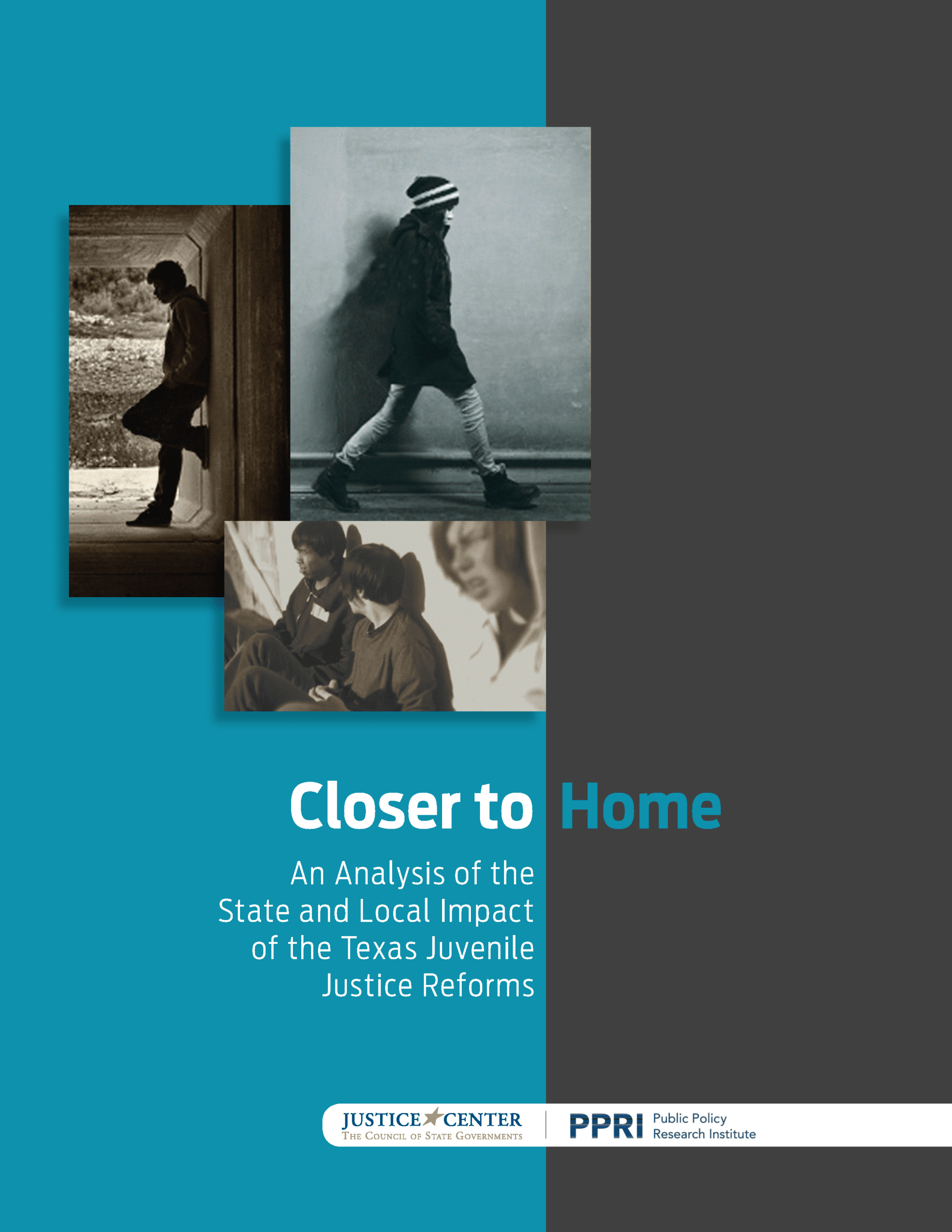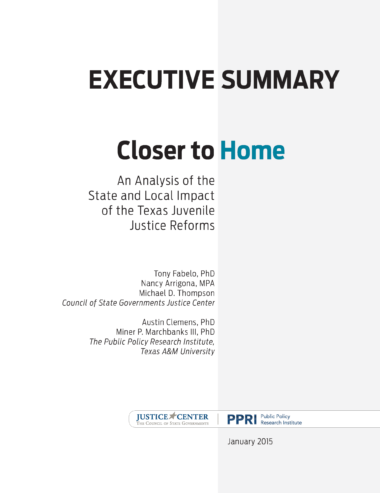Closer to Home: An Analysis of the State and Local Impact of the Texas Juvenile Justice Reforms
A first-of-its-kind study of Texas youth involved with the juvenile justice system shows that juveniles under community-based supervision are far less likely to reoffend than youth with very similar profiles who are confined in state correctional facilities.
Closer to Home: An Analysis of the State and Local Impact of the Texas Juvenile Justice Reforms, which draws on an unprecedented dataset of 1.3 million individual case records spanning eight years, shows youth incarcerated in state-run facilities are 21 percent more likely to be rearrested than those who remain under supervision closer to home. When they do reoffend, youth released from state-secure facilities are three times more likely to commit a felony than youth under community supervision.
The CSG Justice Center unveiled the report on Thursday, January 29, 2015, in a packed room of the Texas Supreme Court, alongside Tennessee Senate Majority Leader Mark Norris, who also serves as chair of CSG, Texas State Sen. John Whitmire, Texas Chief Justice Nathan Hecht, and a number of others.
“The extraordinary data compiled for this study demonstrates convincingly how much better youth—who prior to the reforms would have been incarcerated—fare instead under community supervision,” said Michael D. Thompson, director of the CSG Justice Center. “It also finds that for those youth placed under community supervision, there is still considerable room for improvement.”
The number of incarcerated youth has decreased by more than 40 percent across the nation—with some state populations declining by as much as 80 percent—since 2000, when the number of juveniles incarcerated was at a record high.in the U.S.
 New Hampshire Continues Justice Reinvestment Effort to Improve Conditions for People Who Are High Utilizers of Criminal Justice and Behavioral Health Systems
Read More
New Hampshire Continues Justice Reinvestment Effort to Improve Conditions for People Who Are High Utilizers of Criminal Justice and Behavioral Health Systems
Read More
 New Hampshire Commission Reviews Final Policy Recommendations to Reduce Reliance on Incarceration as Part of Justice Reinvestment Initiative
Read More
New Hampshire Commission Reviews Final Policy Recommendations to Reduce Reliance on Incarceration as Part of Justice Reinvestment Initiative
Read More
 Three Things to Know About New Jersey’s Groundbreaking Community Response Legislation
Three Things to Know About New Jersey’s Groundbreaking Community Response Legislation
In response to growing calls for police reform in New Jersey, particularly following the shootings of Najee Seabrooks and Andrew Washington in March and August 2023, a coalition of law enforcement officials, mental health professionals, and community advocates partnered to explore public safety response alternatives.
Read More














